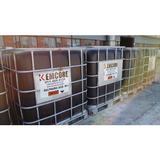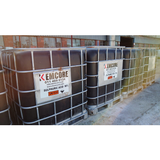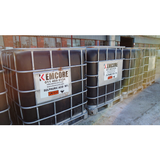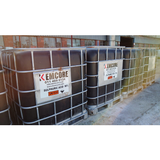Recommended use: Lixiviant for uranium and nickel. Cyanide destruction in gold mining. Leaching Copper from its ores
Sulphuric Acid 98%
1. WHAT KEMCORE PROVIDES AS A PARTNER?
Reliable Supply
KEMCORE is always prepared to fulfill orders as they're placed and deliver the product customers need.
Commitment to Safety
KEMCORE has been safely and responsibly distributing Sulphuric Acid for decades and continues to make advancements through improved packaging options, on-site unloading services, and comprehensive training for our customers.
Dedicated Support
Whether it’s assisting with Suphuric Acid handling or regulatory needs like licensing, permitting, and compliance monitoring, support is available.
2. COUNTRIES OF ORIGIN
- South Africa
- India
3. LOGISTICS
Availability in South Africa - 5 Days
From Durban to West Africa:
- Tema, Ghana - 12 Days
- Takoradi, Ghana - 52 Days
- Lome, Togo - 43 Days
- Dakar, Senegal - 32 Days
- Conakry, Guinea - 43 Days
4. SYNONYMS
Sulfuric Acid Commercial - 60%, 70%, 72%, 72.9%, 77%, 78%, 91.7%, 98%, 98.5%; Alkylation Acid; Oil of Vitriol; Dipping Acid; Sulphuric Acid Concentrated; Sulfuric Acid 1:1.
Our Sulfuric Acid comes in Purity of 98%.
5. SULPHURIC ACID USE IN MINING:
- Lixiviant for uranium and nickel. Cyanide destruction in gold mining.
- In flotation Used when flotation needs to be at a lower pH.
- Leaching Copper from its ores
Other uses
Manufacture of Fertilizers, Explosives, Battery Acid, Dyes, Drugs, Detergents, Adhesives, Plastics, and Paints, in Electroplating, in Tanning, and in the Purification of Petroleum.
Sulphuric Acid is a highly corrosive extremely strong mineral acid which is colorless to slightly yellow in water.
Sulphuric Acid has a wide range of other industrial applications in the mining and general manufacturing industries. These include:
- Manufacturing of STP, TTP used in making phosphate based fertilizers
- Electrolyte in lead-acid batteries
- Waste water processing in oil, detergent manufacturing plants
- Water treatment plants – for pH correction
- Extensive use in platinum and base metal refinery plants.
- Digestion of wire wool in gold processing plants
- Electrolyte in nickel refining
In gold processing, loaded wire wool is digested by pouring sulphuric acid over it. The resultant cake formed after dewatering is fluxed before smelting to produce gold.
6. SULPHURIC ACID LOGISTICS WITHIN SADC
Kemcore supplies Sulphuric acid to mines in the SADC via rail tankers, ISO tanks & road tankers. For more information please see here
Rail Tank Cars
Kemcore uses top-discharge tank cars for rail shipments.
ISO tanks on the Flat Bed Rail
Kemcore uses top-discharge ISO tanks for flat bed rail shipments. Iso tanks to carry sulphuric acid have a capacity to carry 25 tons at a time.
7. COMPOSITION
Molecular Formula: : H2SO4
Cas Number: 7664-93-9;8014-95-7;17107-61-8
Physical Properties
- Form: Oily Liquid
- Appearance : Dense, oily liquid; colorless to dark brown depending on purity
- Odor: odorless
- Boiling point: 290 °C
- Melting/freezing point: :10 °C
- Specific gravity: ca. 1.5-1.85 @20°C
- Flash point: 1500 °C
- pH: <1
Synonyms: Glacial acetic acid; Acetic acid solution; acetic acid 50%; acetic acid, of a concentration of more than 10 per cent, by weight, of acetic acid; Acetic Acid Glacial BP; Natural Acetic Acid; Acetic acid (36%); Acetic acid, food grade; Acetic Acid Glacial; GAA; Acetic Acid, Glacial
It is a colourless liquid that when undiluted is also called glacial acetic acid. It has a distinctive sour taste and pungent smell.
Acetic acid uses: Additive in industrial explosives in Mining.
Other uses include use of acetic acid in the production of vinyl acetate monomer, acetic anhydride and ester production.
Chemical gassing agents -In the case of emulsion explosives, using Acetic acid can accelerate the gassing process. The chemically gassed emulsions may take 40 – 50 minutes for completion of gassing within the blast holes, particularly when the emulsion is colder.
In cases where acetic acid is used, it is added to the emulsion prior to gassing, the desired amount of acid is mixed in the emulsion, before adding the gasser.
A gassing solution comprising sodium nitrite in water together with the selected enol compound and acetic acid is introduced into the emulsion explosive at the blast hole by entraining the gassing solution into a stream of the emulsion explosive using pumps.
The solution pH is an important parameter in the gassing of emulsion explosives due to the high cost associated with acid addition therefore a pH value should preferably be maintained at 4.1 or below.
|
Identifiers |
|
|
Abbreviations |
AcOH |
|
CAS number |
64-19-7 |
|
PubChem |
176 |
|
ChemSpider |
171 |
|
UNII |
Q40Q9N063P |
|
EC number |
200-580-7 |
|
UN number |
2789 |
|
Properties |
|
|
Molecular formula |
C2H4O2 |
|
Molar mass |
60.05 g mol |
|
Appearance |
Colourless liquid |
|
Odor |
Pungent/Vinegar-like |
|
Density |
1.049 g cm |
|
Melting point |
16 to 17 °C; 61 to 62 °F; 289 to 290 K |
|
Boiling point |
118 to 119 °C; 244 to 246 °F; 391 to 392 K |
|
Solubility inwater |
Miscible |
|
Acidity (pKa) |
4.76 |
|
Basicity (pKb) |
9.198 (basicity of acetate ion) |
|
Refractive index(nD) |
1.371 |
|
Viscosity |
1.22 mPa s |
|
Dipole moment |
1.74 D |
1- TRANSPORT INFORMATION
- Transport-UN 2789
- Hazard Class No. : 8
- Packing Group: II
- H.S. Code: 2915211900
2- STORAGE & HANDLING
- Stable at room temperature in closed containers under normal STORAGE & HANDLING and handling conditions. Refer to SDS sheet
3- PACKING
|
Packing type |
Tons/FCL |
|
IBC Drums |
18tons/FCL |
|
30kg Drums |
21tons/FCL |
|
200Kg drums |
16tons/FCL |
4.Environmental impact
- Acetic acid biodegrades readily under both aerobic and anaerobic conditions.
- Acetic acid does not absorb light with wavelengths >290 nm(4), and is not expected to be susceptible to direct photolysis by sunlight(SRC).
- Incase of spillage neutralize spill with soda ash or lime.
5. Download our Acetic acid msds for more handling information.














